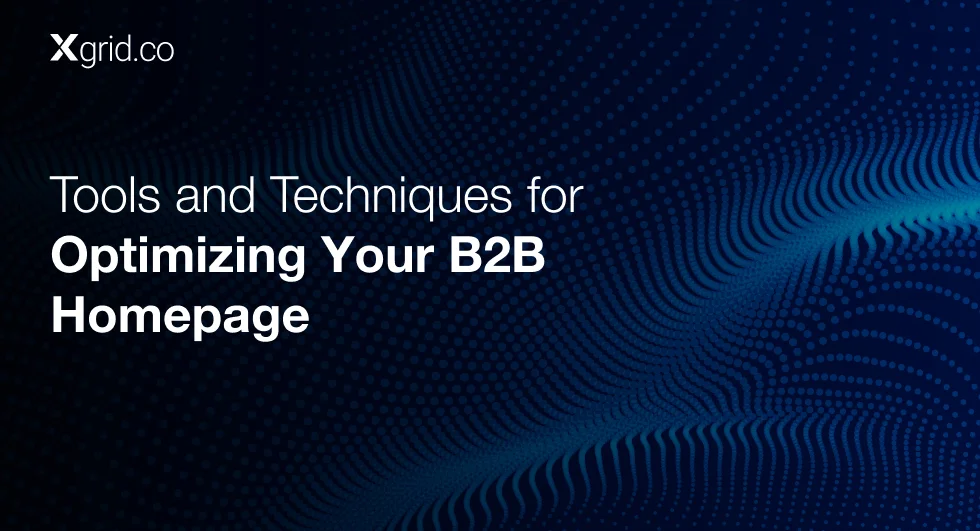AI’s Role in Content and SEO: Navigating the Shift from Keywords to Topics
As AI becomes more integrated into search engines, companies need to adapt their content strategies to ensure visibility and relevance in this new landscape.
As mentioned in the playbook, “SEO is no longer just about keywords—it’s about authority, trust, and relevance.”
This article will explore how AI is transforming search algorithms and content strategies and what startups can do to stay ahead of the curve.
The AI Shift from Keywords to Topics
Search engines, particularly Google, have evolved beyond simple keyword matching. With AI technologies like natural language processing (NLP), search engines can now understand the context, intent, and relationships between topics.
This allows them to deliver more relevant results based on the overall substance of the content rather than just matching specific words.
As Julia Witshire, a B2B marketing strategist, explains, “AI-driven search engines are rewarding content that demonstrates expertise, authority, and trust (E-A-T).” This means that companies must focus on producing content that thoroughly covers entire topics, rather than optimizing individual pages for narrow keywords.
Strategies for Adapting to AI-Driven Search
1. Focus on Topic Clusters
One of the most effective ways to adapt to AI-driven search is by organizing your content into topic clusters. A topic cluster involves creating one comprehensive pillar piece on a broad subject and linking it to smaller, more specific pieces of content (subtopics) that delve into individual aspects of that subject. This structure allows AI-powered search engines to understand the relationship between content pieces, boosting your site’s authority on the topic.
- Actionable Tip: Identify core topics that are relevant to your industry and build pillar content around them. Support each pillar with related blog posts, case studies, or whitepapers that cover subtopics in detail.
2. Optimize for User Intent
AI doesn’t just look at keywords; it tries to understand what users are searching for. This means your content needs to be tailored to match the search intent—whether that’s informational, navigational, or transactional.
- Actionable Tip: Before creating content, analyze what your target audience is searching for and determine the intent behind those searches. Structure your content to provide clear answers or guidance that directly addresses that intent.
3. Leverage Structured Data
AI-powered search engines can also parse structured data (such as schema markup) to understand and categorize content more effectively. Implementing structured data can help search engines better understand the context and structure of your content, leading to higher visibility in search results.
- Actionable Tip: Use structured data to mark up elements like FAQs, reviews, or events on your website. This will help search engines display rich results, improving your content’s visibility.
For startups looking to scale, pillar content is an essential foundation. However, with the evolving landscape of SEO, it’s crucial to integrate AI into your content strategy.
Pillar content combined with AI-driven topic strategies can significantly improve how you rank for a broad range of relevant topics. To understand more about building and scaling pillar content, revisit our article on pillar content strategy for startups.
AI isn’t just limited to search strategies; it can also play a significant role in creative content development. For those looking to harness AI’s power with creative professionals, our article on creative strategy with filmmakers and influencers provides insights into how AI can enhance collaboration with influencers and filmmakers to produce engaging content.
Conclusion
AI’s influence on search is only going to grow, making it essential for startups to adapt their content strategies to align with these new algorithms. By focusing on topic clusters, optimizing for search intent, and using structured data, companies can maintain visibility in AI-driven search engines and build long-term authority.
Downloads
Article (PDF-276 KB)MOST POPULAR INSIGHTS
About The Author(s)
Related Articles
Related Articles

Established in 2012, Xgrid has a history of delivering a wide range of intelligent and secure cloud infrastructure, user interface and user experience solutions. Our strength lies in our team and its ability to deliver end-to-end solutions using cutting edge technologies.
OFFICE ADDRESS
US Address:
Plug and Play Tech Center, 440 N Wolfe Rd, Sunnyvale, CA 94085
Pakistan Address:
Xgrid Solutions (Private) Limited, Bldg 96, GCC-11, Civic Center, Gulberg Greens, Islamabad
Xgrid Solutions (Pvt) Ltd, Daftarkhwan (One), Building #254/1, Sector G, Phase 5, DHA, Lahore





